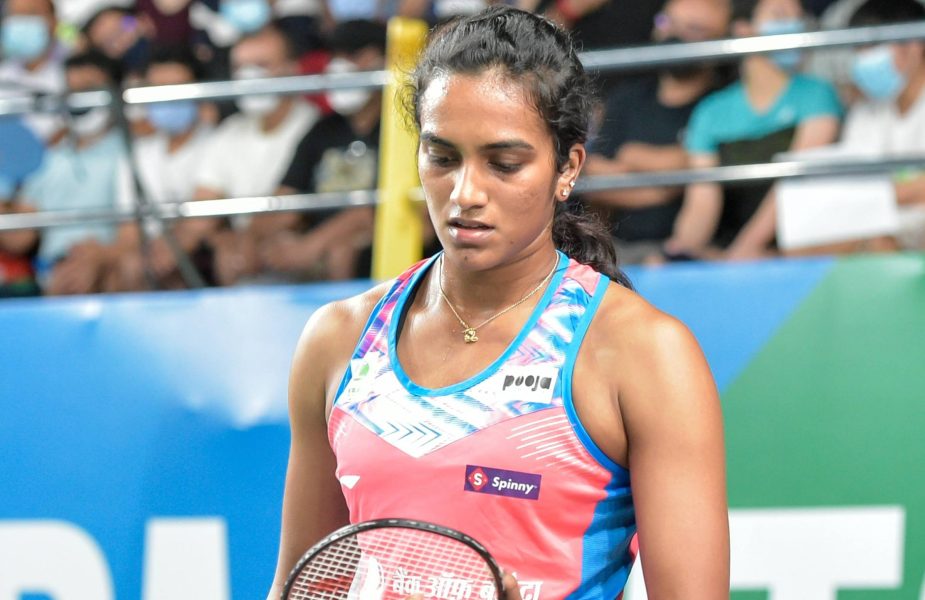
Lack of strategy her Achilles heel as PV Sindhu's form takes a huge hit

Indian sports fans have been watching with concern the alarming decline in form of badminton superstar PV Sindhu who has lost six of her last 13 international tournaments in the first round. Sindhu has been struggling to recover after a five-month ankle stress fracture injury layoff, and is finding it impossible to reach anywhere near her old form and has plunged to 17th in the international ranking.
Sindhu has recently appointed former Malaysian All England winner Hafiz Hashim, who has been based in Hyderabad, as her new coach. Sindhu had a long run with Korean coach Park Tae Sang who took her to an Olympic medal in Tokyo. That ended in February this year. Sindhu has been impatient due to her continuing failures at the international level and seemed very excited to have Hafiz as her coach going by her tweet.
The question is what does it take for a top player to come back from such a slide or decline? Most top players who had to take long injury breaks find their old form, though it takes up to six months. If age and fitness are on your side a top player always recaptures form. Sindhu has enough time to get back in form for the Paris Olympics next year. But so far her comeback trail has been strewn with the debris of agonising defeats.
Also read: PV Sindhu: Want to win gold at Paris Olympics
Injury comebacks are not at all easy. Many former top players have given up hope. Tennis star Dominic Thiem, once ranked third in the world (like Sindhu) who won a Grand Slam, has been unable to get back into top rankings, losing consistently in the circuit and is now ranked 89. When Novak Djokovic was coming back from a tennis elbow injury (scary injury for a tennis player) he too had a run of such terrible defeats. Since the 2016 Paris Open Djokovic lost nine matches to much lower-ranked players because he hadn’t yet reached top form after his injury. In May 2017, as the defeats continued, Djokovic sacked his entire coaching staff. Within a year he was back at the top.
However, changing a coach itself is no guarantee of a comeback. Coaches are supposed to take you to higher levels of strategy but there are few coaches, especially in India who have that capacity of breaking down and reconstructing a player’s game which needs to be done in the case of Sindhu.
There is no doubt that strategy is Sindhu’s main weakness and her new coach needs to work on this.
Also read: PV Sindhu wins Singapore Open title for her third trophy in 2022
Even before her injury, she has been losing consistently to badminton’s top 3, unable to find a way out since she did not have the right strategy. Sindhu’s nemesis Taiwan’s Tai Tzu against whom she has a disappointing 16 losses to five wins before her injury, is an example of this strategic flaw. Tzu’s deceptive game at the net has time and again foxed Sindhu who has had no way to wriggle out of this nor has Sindhu’s net play improved. It has been the same against Japan’s Akane Yamaguchi and China’s Chen Yu and even Thailand’s Ratchanok Intanon all of whom have a good record against Sindhu.
For a long time now, Sindhu has not improved her repertoire. In other words, she has stagnated. A player who stagnates or whose performance has plateaued out will decline sooner than later and that is what has happened to Sindhu. Sadly we do not see any drastic plan in place as of now.
Early this year after her quarter-final loss in the US Open to Chinese star Gao Feng, Sindhu tweeted: “My US Open journey came to an end in the quarterfinals, where I faced the talented Gao Fang Jie. Despite having previously defeated her in Canada, she outplayed me in straight sets this time, making effective use of my weaknesses. I must commend her for being fully prepared and delivering an impressive performance. Next time I face you Gao, should be a battle.”
Considering her terrible run this year, it is best that Sindhu takes time off from tournaments and rebuilds her game, adds new shots, improves her game at the net, and most of all, adds to her mental strength and sense of perseverance. Also, she has to play some lower-level tournaments to score consistent wins and get back her shattered confidence. Some more early defeats in major ranking tournaments will completely destroy her confidence in the run-up to Paris Olympics. Any player in her situation has to work herself up with smaller victories into an ethereal zone where victory is always just a handshake away and becomes an addiction. As of now, Sindhu is far from that state of mind and body.
(The writer is the author of Top Game: winning, losing and a new understanding of sport from which some of the points in this article have been taken.)
(The Federal seeks to present views and opinions from all sides of the spectrum. The information, ideas or opinions in the articles are of the author and do not necessarily reflect the views of The Federal.)


